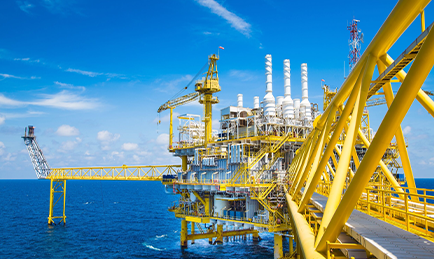- Afrikaans
- Albanian
- Amharic
- Arabic
- Armenian
- Azerbaijani
- Basque
- Belarusian
- Bengali
- Bosnian
- Bulgarian
- Catalan
- Cebuano
- Corsican
- Croatian
- Czech
- Danish
- Dutch
- English
- Esperanto
- Estonian
- Finnish
- French
- Frisian
- Galician
- Georgian
- German
- Greek
- Gujarati
- Haitian Creole
- hausa
- hawaiian
- Hebrew
- Hindi
- Miao
- Hungarian
- Icelandic
- igbo
- Indonesian
- irish
- Italian
- Japanese
- Javanese
- Kannada
- kazakh
- Khmer
- Rwandese
- Korean
- Kurdish
- Kyrgyz
- Lao
- Latin
- Latvian
- Lithuanian
- Luxembourgish
- Macedonian
- Malgashi
- Malay
- Malayalam
- Maltese
- Maori
- Marathi
- Mongolian
- Myanmar
- Nepali
- Norwegian
- Norwegian
- Occitan
- Pashto
- Persian
- Polish
- Portuguese
- Punjabi
- Romanian
- Russian
- Samoan
- Scottish Gaelic
- Serbian
- Sesotho
- Shona
- Sindhi
- Sinhala
- Slovak
- Slovenian
- Somali
- Spanish
- Sundanese
- Swahili
- Swedish
- Tagalog
- Tajik
- Tamil
- Tatar
- Telugu
- Thai
- Turkish
- Turkmen
- Ukrainian
- Urdu
- Uighur
- Uzbek
- Vietnamese
- Welsh
- Bantu
- Yiddish
- Yoruba
- Zulu
Understanding Petroleum Tubing Couplings for Efficient Oil and Gas Extraction
Understanding Petroleum Tubing Couplings An Essential Component in Oil and Gas Operations
In the ever-evolving world of oil and gas exploration and production, the role of petroleum tubing couplings is often underestimated. However, these components are critical for ensuring the effective and safe flow of oil and gas from the wellhead to the surface and subsequently to processing facilities. This article delves into the significance of petroleum tubing couplings, their types, applications, and the factors influencing their selection.
What Are Petroleum Tubing Couplings?
Petroleum tubing couplings are essential fittings used to connect lengths of tubing in oil and gas wells. Tubing itself consists of thin-walled pipes that transport hydrocarbons from underground reservoirs to the surface. Couplings serve as the joints or connectors that link these pipes, allowing for integrity in flow and pressure management. They are designed to withstand the extreme conditions prevalent in subsurface environments, including high pressures, corrosive fluids, and mechanical stresses.
Types of Petroleum Tubing Couplings
There are several types of petroleum tubing couplings, each engineered for specific applications
1. Standard Couplings Typically used for connecting two tubing joints, these are the most common type. They are usually made from carbon steel and can be welded or threaded at their ends.
2. Locking Couplings These feature a locking mechanism that provides maximum resistance to separation. These couplings are suitable for high-pressure applications where added security is necessary.
3. Expansion Couplings Designed to handle thermal expansion differences between connected sections, these couplings allow for movement without compromising seal integrity.
4. Specialty Couplings Some applications might require couplings that can handle specific environmental conditions, such as corrosive chemicals or extreme temperatures. Specialty couplings are customized to meet these demands.
petroleum tubing coupling

Importance of Selection
Selecting the appropriate coupling is vital for the efficiency and safety of operations. Factors that must be considered include
- Pressure Ratings Couplings must be able to withstand the maximum pressure expected in the well.
- Material Compatibility The chosen material should be compatible with the fluids being transported, especially if corrosive substances are involved.
- Operating Temperature High temperatures can alter the properties of both the coupling and the tubing, influencing material choice.
- Installation Method The nature of installation, whether it be welded or threaded, affects the choice of coupling.
Applications Beyond Drilling
Besides their critical role in drilling operations, petroleum tubing couplings are also employed in secondary recovery processes, such as Enhanced Oil Recovery (EOR) methods. In these instances, couplings must support additional challenges, predominantly due to the volatile conditions created by the injection of steam, gas, or chemicals into the reservoir to propel hydrocarbons towards extraction points.
Conclusion
Petroleum tubing couplings, while often overlooked, are quintessential elements in the oil and gas industry. They not only contribute to the efficient and safe transport of hydrocarbons but also play a significant role in the overall integrity of the petroleum extraction process. As the industry progresses and faces new challenges, the development and refinement of these couplings will continue to be essential for maintaining operational efficiencies and safety standards. The careful consideration of material, design, and functionality will pave the way for innovation in this critical area of petroleum engineering. Understanding the complexities and specifications of tubing couplings is imperative for professionals within the sector who aim to optimize their operations and ensure the longevity of their systems.
-
Tubing Pup Joints: Essential Components for Oil and Gas OperationsNewsJul.10,2025
-
Pup Joints: Essential Components for Reliable Drilling OperationsNewsJul.10,2025
-
Pipe Couplings: Connecting Your World EfficientlyNewsJul.10,2025
-
Mastering Oilfield Operations with Quality Tubing and CasingNewsJul.10,2025
-
High-Quality Casing Couplings for Every NeedNewsJul.10,2025
-
Boost Your Drilling Efficiency with Premium Crossover Tools & Seating NipplesNewsJul.10,2025







